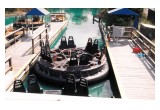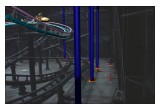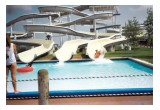
Houston, Texas, August 18, 2016 (Newswire.com) - ATA Associates, Inc. recognizes the evolution occurring within the amusement and water park industry. The number of visitors to U.S theme parks and water parks has grown at an annual rate of about 4% over the last several years to well over 300 million persons per year. To compete for this growing pool of customers and to satisfy ardent ride enthusiasts’ hunger for new thrills, parks have introduced a new generation of rides, some of which feature vertical drops of over 200 feet and speeds in excess of 70 mph.
A rash of recent amusement park mishaps, most notably the well-publicized August fatality on the Verrückt ride at Kansas City’s Schlitterbahn water park, suggests that escalating thrill technology must be accompanied by a proportional effort in safety technology and procedures if park patrons are to be protected. Nowhere is it more important for equipment and procedures to be right than at the machine/human interface between the ride and the rider. The rider’s height, weight, strength, stamina and possible physical or mental limitations all must be anticipated and planned for, not only in the design of the interface but also in the development of critical procedures such as rider loading and securement which occur there.
"I think (parks) attempt to do everything they can to avoid dangerous scenarios, but when you look at high-energy rides ... you're at the edge of extremes. The rides are safer, but there's more danger, and if something goes wrong, it's more significant."
Robert Swint, Expert and C.E.O., ATA Associates, Inc.
ATA Associates, Inc. has been involved with safety analysis and performance testing of rides at amusement parks and water parks for over 30 years. Also lending expertise in testing, instrumentation, inspection and analysis to support proactive amusement park safety programs across the USA.
Source: ATA Associates, Inc.
Share:



